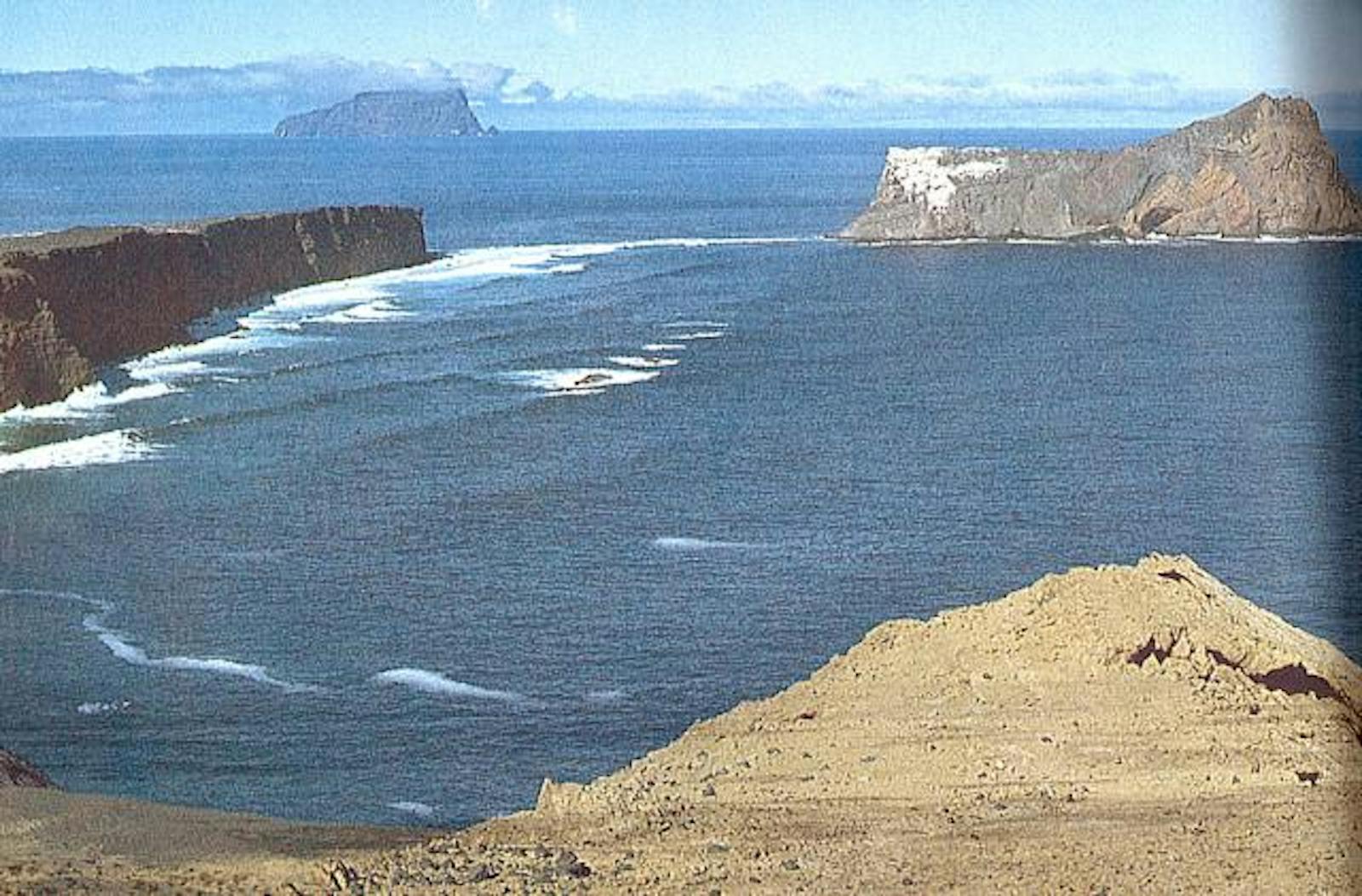San Félix-San Ambrosio Islands Temperate Forests
The ecoregion’s land area is provided in units of 1,000 hectares. The conservation target is the Global Safety Net (GSN1) area for the given ecoregion. The protection level indicates the percentage of the GSN goal that is currently protected on a scale of 0-10. N/A means data is not available at this time.
Bioregion: Juan Fernández & Desventuradas Islands (NT7)
Realm: Southern America
Ecoregion Size (1000 ha):
1
Ecoregion ID:
562
Conservation Target:
15%
Protection Level:
0
States: Chile
The isolated San Felix-San Ambrosio Islands are home to the sole plant species of the genus Thamnoseris. Thamnoseris lacerate is an endemic shrub found only within this ecoregion. It is a dominant species on San Ambrosio, in an otherwise largely unvegetated landscape. This shrub can be found growing along the bases of cliffs and forming clusters and hedges, especially in areas protected from goats introduced by human. The isolation of these islands has limited immigration of species and limited the ecosystems to a small, unique, and fragile community of an endemic species.
.jpg)
The flagship species of the San Félix-San Ambrosio Islands Temperate Forests ecoregion is the Thamnoseris lacerate. Image credit: Creative Commons
The Desventuradas archipelago, or “Unfortunate Islands”, are formed by four Pacific islands, including San Félix and San Ambrosio. It is part of the ocean territory of Chile, lying some 850 km west of Chile. Both islands are part of the Pascua volcanic chain and are both about 2.5 km2 in size.
There are no permanent sources of fresh water on the islands and it is probable that there are only temporary waterways associated with rains. The climate of San Félix is Mediterranean, moist, warm, and oceanic. The average temperature is 17.8°C, and the average annual rainfall is 94.8 mm, occurring primarily in winter.
The physiognomy and vegetation of San Félix island reflect arid condition, with low scrubland of 20–30 cm high bushes with cushions predominate covering around 25% of the island. The only shrubby tree species found on the island is Thamnoseris lacerate; other woody small-leafed plants include Frankenia vidalii, Atriplex chapinii, Suaeda nesophila, and Maireana brevifolia. Compared to San Félix, San Ambrosio Island generally has greater plant cover and in sectors that benefit from fog, there are individual examples of Thamnoseris lacerata up to 5 m high. Other common species include Sanctambrosia manicata, Eragrostis peruviana, and Eragrostis kuschelii.
Due to their very small land area, the development of biota on these islands are stunted. Vertebrates inhabiting both islands are exclusively limited to birds. Ten species of marine birds and one land bird species make their nests on or visit the islands. Eight species are residents on the islands, including a subspecies of American falcon that is endemic to San Ambrosio.
The announcement of Nazca-Desventuradas Marine Park in 2015 is the first form of protection given to the San Felix and San Ambrosio ecoregion and surrounding waters. Managed by the Chilean government, it is the largest marine reserve in the Americas and bans several activities with its no-take policies, including fishing.
On San Félix Island there is a permanent presence of a detachment of the Chilean Navy, while there are no human settlements on San Ambrosio. The effects of this on the biodiversity of these islands are unknown, although the construction of any infrastructure represents a significant reduction in habitat, already limited by the size of the island. This includes the recent addition of Isla San Félix airport.
Recent agricultural efforts have been reported as well, which alters native habitat. The increased human presence also correlates with introduced species of plants and animals that compete with the natives, for example, domestic cats and dogs that predate on the few bird species in the area. There is no recent assessment of introduced species on San Ambrosio Island, beyond the presence of goats and rodents.
The priority conservation actions for the next decade will be to: 1) conduct detailed studies and mapping of the ecoregion’s flora and fauna; 2) monitor new arrivals and manage introduced species, both flora and fauna; and 3) establish an environmental program to educate the locals of San Félix on their impacts and reduction strategies.
Citations
1. Teillier, S. Vilina, Y. 2018. Islands off the coast of central Chile in the Pacific Ocean https://www.worldwildlife.org/ecoregions/nt0403 Accessed October 2, 2018
2. Bahamonde, N. 1987. San Félix y San Ambrosio, las islas llamadas Desventuradas, Pages 85-100 in J.C. Castilla (editor), Islas oceánicas chilenas: conocimiento científico y necesidades de investigaciones. Ediciones Universidad Católica de Chile.
3. González-Ferrán, O. 1987. Evolución geológica de las islas chilenas en el Océano Pacífico. Pages 37-54 in J.C. Castilla (editor), Islas oceánicas chilenas: conocimiento científico y necesidades de investigaciones. Ediciones Universidad Católica de Chile.



